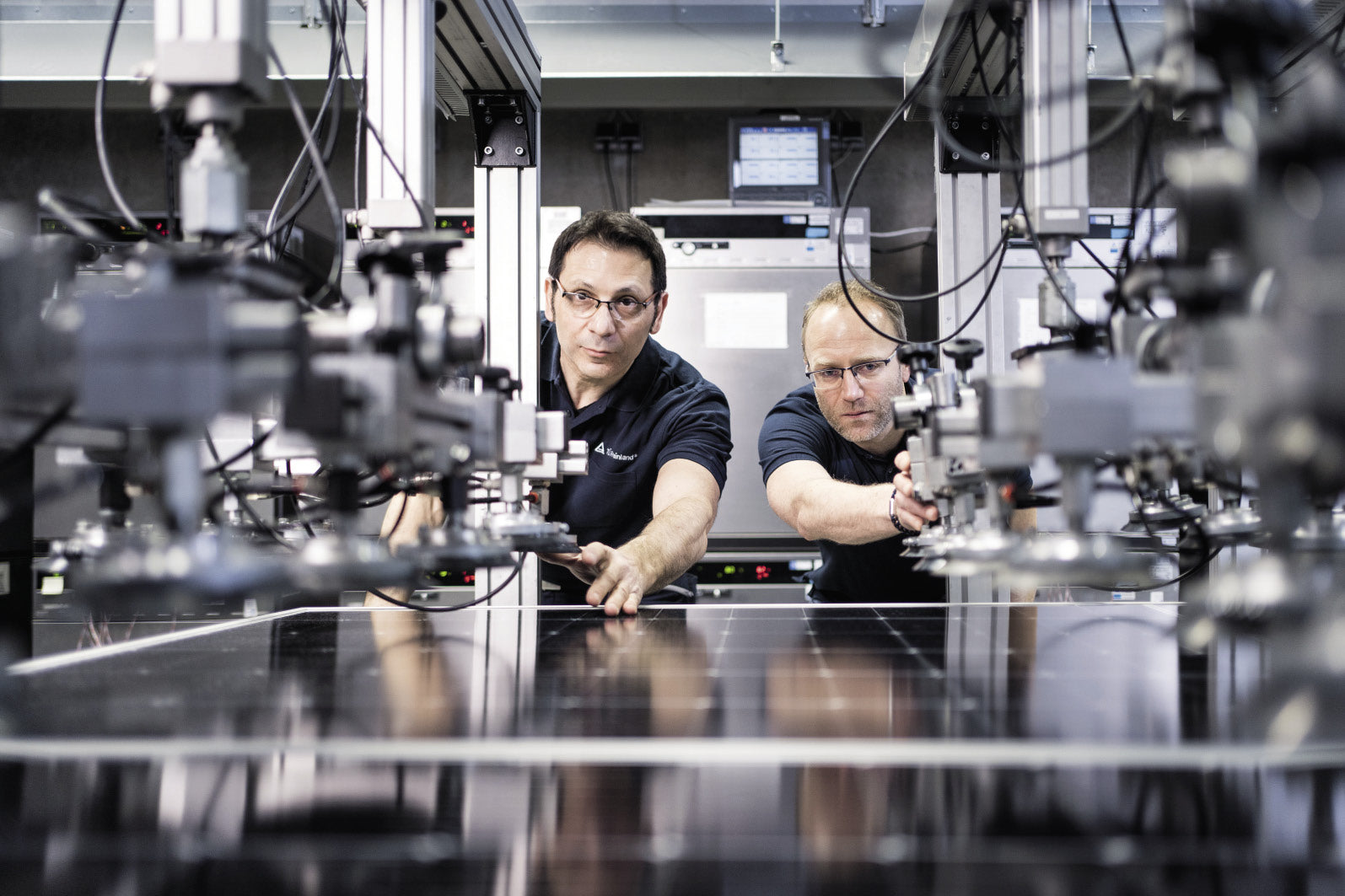https://www.pv-magazine-australia.com/2022/04/23/weekend-read-science-or-art-defining-the-performance-of-bifacial-modules/
Weekend read: science or art? Defining the performance of bifacial modules

Assessing on-site albedo and rear-side gain for projects with bifacial PV modules adds significant complexity to project development, and standards have yet to emerge.
Engie Laborelec
From pv magazine 04/2022
Today, bifacial technology makes defining plant performance ever more challenging, and so far no industry consensus on the methodology has formed. When it comes to assessing, installing and evaluating plants with bifacial modules, we at Everoze have identified three critical challenges to overcome. After all, simplifying the definition of plant performance in the EPC and O&M contracts may just be the best way to limit – or better avoid – lengthy discussions and complicated claims for all involved.
The bifaciality of PV modules has led to a technology leap over the past few years. The technology is now widely used, since the difference in cost is usually well compensated by the energy gain. For some ground-mounted PV plant developers, it is now the default technology. Many publications, works and tools deal with the calculation of the bifacial gain. The complexity of assessing the gain on the back side of the modules has clearly increased compared to measuring the frontside alone. To assess the albedo (i.e., the ground reflection of the irradiation), to estimate the rear shading – due, for example, to structures or other components – and to take other factors into account, is not straightforward. A prudent energy evaluator will need to increase the uncertainty associated with the rear side gain for the project. But at this stage despite – or maybe because of – the importance of the gain there is no consensus. Every technical adviser, engineering office, manufacturer, or financier may have a different view for the same project.
But this is not challenge enough. The albedo, which used to be an undebated input in PVsyst energy assessment for monofacial modules (20%), impacts the bifacial performance gain to a much higher degree. One way to address this is to undertake albedo measurements during early development of new projects. The goal of those measurement campaigns is to increase the accuracy of the albedo values and hence that of the energy assessment.
Market practices
Even though more and more on-site measurement campaigns are run, market practice around installation procedures proposed for on-site measurement of the albedo are still evolving. For example, some experts suggest short-term campaigns with an albedometer on site for a few days. Everoze has analysed the benefit of correlating long-term satellite albedo data with one- or two-day on-site measurements, yet the results do not seem promising. So, this approach does not yet fully solve the puzzle.
In order to better understand the importance of the albedo impact, Everoze performed a simple analysis on several projects using bifacial technology. The analysis – based on PVsyst – demonstrated a linear correlation between energy yield and albedo. The sensitivity analysis revealed that a 10% variation in albedo results in approximately 0.2% to 0.3% energy variation depending on plant design and location. To be clear, 10% variation in albedo means going from an albedo of 0.2 to 0.18 or 0.22. So, with this sensitive correlation in mind, an error of 40-50% in the albedo figure, which is not unlikely, leads to a non-negligible impact on the ROI in the financial model.
Simplicity wins
Finally, we are coming to the challenge of defining how to install, measure and correct performance of bifacial modules in the EPC contract and its guarantees. This is important, since the performance guarantee is expected to protect the owner or lender from a lower performance, over the lifetime of its asset.
At least there is some good news, since the latest standard IEC 61724 provides guidance allowing for a verification of whether the albedo station is well installed and follows good industry standards. But it
is also important to ensure the right location for the albedo station, which should be representative of the “average albedo for the plant”. Only for really homogeneous projects with same row to row spacing in say, desert climates, may this not prove an issue. And bear in mind, the first-year albedo may not be representative of the long term, since the works have modified the soil conditions that will regenerate after the first years when vegetation regrows. Any test based on this transient albedo condition may not be representative of the long term.
The higher the complexity in a PV contract, the better the chances to never agree on the achieved PR by the contractor. Given the financial consequences, resolving this debate can end up being lengthy and costly. Therefore, we see it as better not to include an albedo correction (as for the temperature correction) in the EPC contract, as far as practicable, and instead find a suitable albedo figure before signing either with long term measurement stations or agreeing on an albedo figure that is not the standard 0.2.
Bifacial gain and albedo assessment clearly add to the complexity of guarantee definition in the EPC contract when not backed by standards or by widespread aligned market practice. Being mindful of the uncertainty coming with a solar energy estimate, an uncertainty only increased by the complexity of implementing a bifacial module, will soften the discussions. Choosing pragmatic and simple definitions may be the only way out until there is more clarity and agreement.
Christophe Campistron
About the author
Christophe Campistron has a broad and deep understanding of the technical and commercial realities of solar PV projects, combined with practical experience in project construction and operation. He is equally at ease advising at a strategic level as he is drilling into the details of on-site technical issues.
This content is protected by copyright and may not be reused. If you want to cooperate with us and would like to reuse some of our content, please contact: editors@pv-magazine.com.
<



